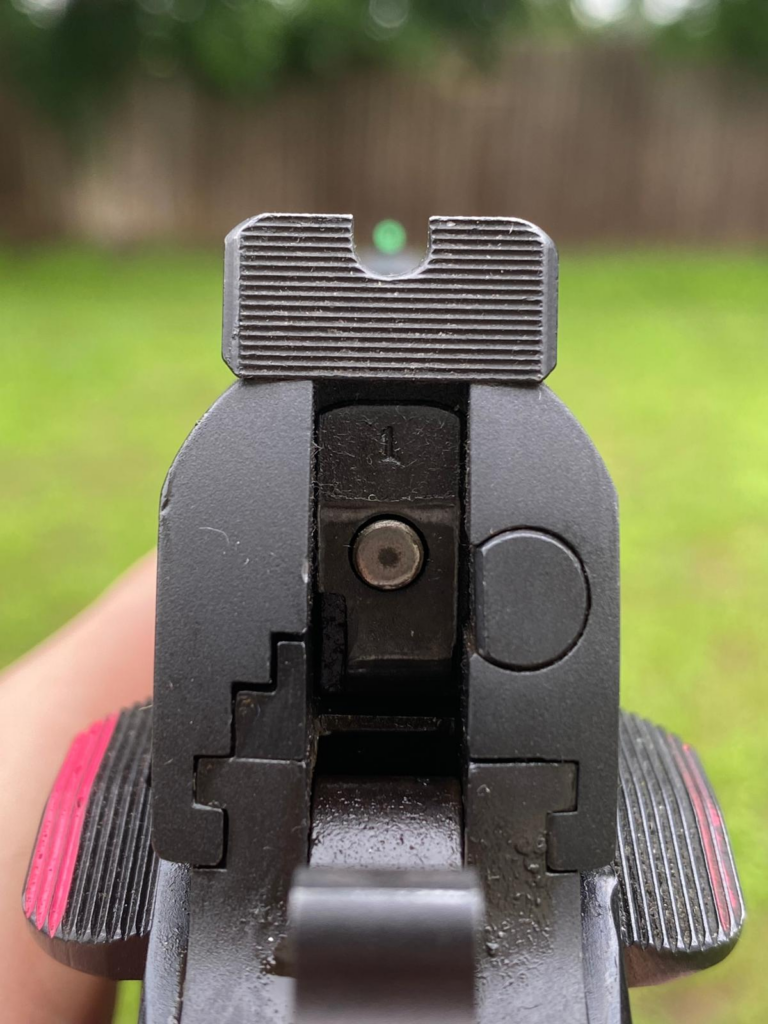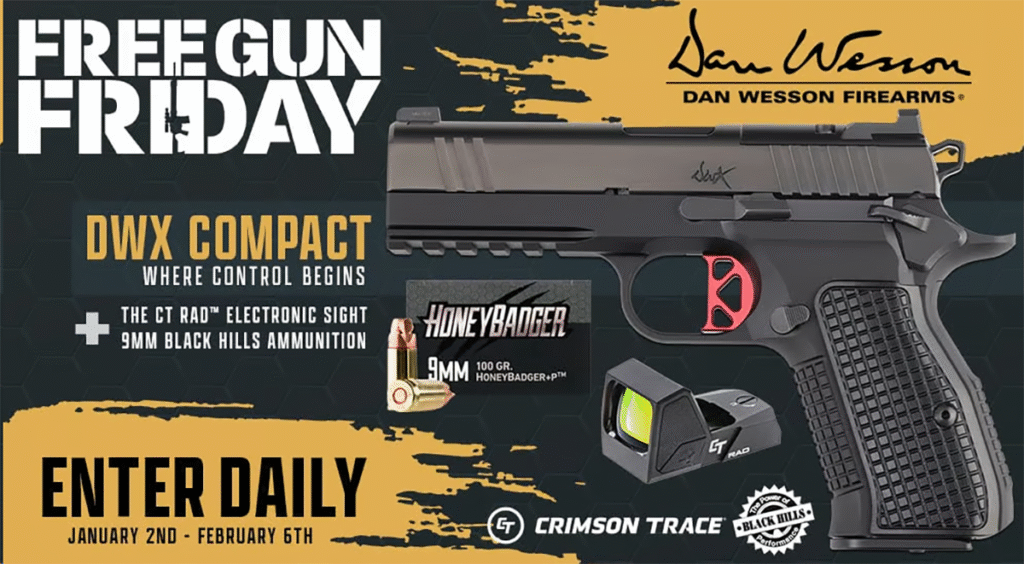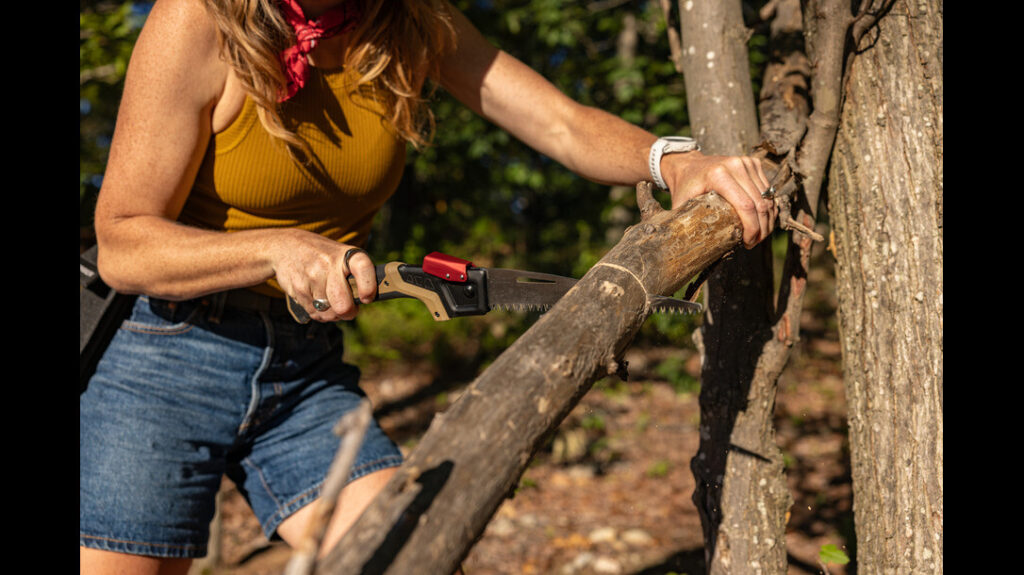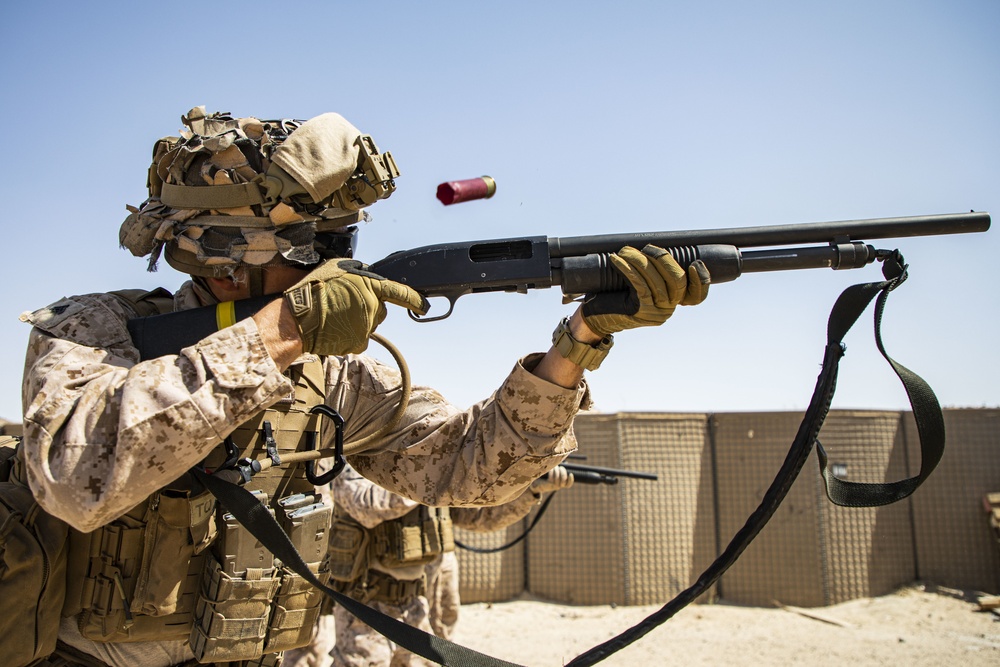One of the long-term projects I’ve been meaning to write about is the .45-caliber Colt Competition Series 1911 on loan from a friend. I’ve been dry-firing and taking this 1911 to the range intermittently since 2022–including the only Steel Challenge match I’ve ever shot.
Colt Competition Series Overview
The Colt Competition Series is one of Hartford’s re-invigorated single-stack product families that made a comeback around 2017 or so when Colt started bringing back the more desirable [read: classic] Series 70 ignition system. This style of ignition is desirable not only because it’s what John Moses Browning originally designed his pistols to use but also because that’s what most 1911s have always used.
Furthermore, serious 1911 enthusiasts claim that other systems like the Series 80s or Swartz don’t provide the same smoothness in trigger presses due to their extra parts. It’s a combination of tradition and perception, and honestly, yours truly is also on that bandwagon. After all, there’s something to be said for the “original recipe” which is still in use a century later.
Advertisement — Continue Reading Below

Digging Deeper
Colt Competition Series models are available in either carbon or stainless steel. It’s chambered for three classic and popular sporting cartridges: .45 ACP, .38 Super, and 9mm Luger. There are varying trim levels with elements like adjustable target “Bo-Mar” style sights, front slide serrations, and checkering on the frame. All are outfitted with a Colt “National Match” barrel and fiber optic front sights.
Base models include standard Novak-style sights. Additionally, base-level slides have only rear serrations, coarse, with the top of the slide rounded in the classic 1911 profile. The flats are nice and polished, and the blued finish gives off that deep Colt blue sheen. Though the rounds aren’t polished, they’re not coarse, either.
Advertisement — Continue Reading Below
Ejection ports are lowered and flared, which is also very typical of modern 1911s. It also goes without saying that as modern manufactured pistols, the entire Competition series makes use of upswept beavertail grip safeties, flat mainspring housings, and ring hammers. The base models, like military USGI 1911s, do not have any checkering.
This base model, Colt Competition 1911, does not have a full-length guide rod. Instead, it has the classic USGI length shorter guide rod along with the classic barrel bushing and recoil spring plug at the muzzle. It’s not loose, but it’s also not stiff enough that a bushing wrench is needed. These guns include a set of nested recoil springs, where a smaller diameter spring is nestled inside of a larger spring.
Unlike classic government frames, all frames in this product family do appear to have a subtle, gentle undercut below the trigger guard. I don’t mind it at all. The entire product family also includes “sporty” G10 stocks in differing patterns, depending on trim level. The gun I’m writing about has the basic Colt-branded G10 stocks that its owner dyed black.
Advertisement — Continue Reading Below
The Back Story With This Colt
The specimen featured in this article is the base model chambered in .45 ACP and built on a blued carbon steel frame with a blued carbon steel slide. It’s also fair to point out that my buddy who loaned this gun to me switched out a few components immediately after he purchased it. This included adding a pair of EGW extended thumb safeties, a 10-8 Performance flat-faced trigger assembly, a 10-8 Performance Gen2 1911 slide-stop, and a set of 10-8 Performance iron sights (front fiber-optic, rear serrated, plain with U-notch).
My entire experience shooting this gun since Day 1 includes all of these parts, and not necessarily the Colt Competition in its bone-stock configurations. As a left-handed shooter, I appreciate the ambi-safety from the get-go. Likewise, I find the sight picture from these 10-8 Performance sights superior to the factory sight picture (especially in terms of a better rear sight).
While I can’t speak for the other more expensive models in this specific product family, this base model .45-caliber steel frame single-stack gun makes for a decent all-around general-purpose 1911 suitable for most everything one would use a 1911 to accomplish. Measured with a digital trigger scale, ten trigger pulls broke to an average of 3 lbs, 14 oz—just a hair under four pounds.
Advertisement — Continue Reading Below
The way its trigger breaks is very typical for a production gun. So, even at its weight, it requires some level of deliberateness, but not so much that it would rob the shooter of precision. Therefore, it’s suitable for defense, target shooting, training, and recreation without its single-action trigger turning into a liability. Its flat face is nice, too.
And My Thoughts So Far
This specimen has easily seen 500 rounds at the very least (if not more). Though 500 rounds isn’t a comprehensive number, this Colt has been one of the more reliable 1911s I’ve shot since I started writing about shooting. The pistol has had no problem generally cycling factory 230-grain ball ammo, my own 230-grain ball handloads, or my 200-grain LSWC handloads.
Even during this sole Steel Challenge match, which entailed shooting the gun as fast and as hard as I could, the gun didn’t struggle at all. Between that match and the several range sessions I’ve shot with it, this pistol has been holding up its end of the bargain. And for a name-brand 1911 pistol that retails for less than $1,000, it’s not bad at all.
Advertisement — Continue Reading Below
The only stoppages I’ve had were due to a magazine with known issues and the occasional pesky improperly sized hand-loaded cartridge that sneaks into the range ammo box. Otherwise, with proper lubrication and quality magazines, I trust this Colt to shoot my next match with confidence.
When my friend first loaned me this pistol, it was basically like-new with a very marginal round count–maybe a few magazines, if that. Overall, the gun was extremely stiff across all major areas: slide-to-frame, thumb-safeties, and trigger. It was very obvious that the gun needed firing in order for all of its parts to better meld together.
With new 1911s being the creatures they are, I also wouldn’t be surprised if these aftermarket additions added to the overall stiffness. I noticed the 10-8 drop-in trigger certainly slides around better now than when I first started shooting the pistol in 2022. Overall, I’m pleased with the manner in which this 1911 is laid out.
Advertisement — Continue Reading Below

The 10-8 Performance Sights
The 10-8 Performance Sights on this Colt Competition Series are a critical part of the equation, if not the single most important aspect. These sights provide the shooter with an excellent sight picture. Even though I prefer a deep square rear notch, the U-notch of the rear sight isn’t disagreeable at all.
Most importantly, the front sight is regulated to hit dead-center at 25 yards out of a government-size 5-inch barreled 1911. Be it factory 230-grain factory loads or even my own 200-grain SWC loads, all print pretty much dead-on at 25 yards to where the fiber optic insert specifically corresponds.
Advertisement — Continue Reading Below
For general purpose shooting and self-defense, the center-hold is fine. For pure target work, a six o’clock hold would be preferable but this pistol shoots well enough that hitting the black on a B-8 target isn’t a hindrance either.















